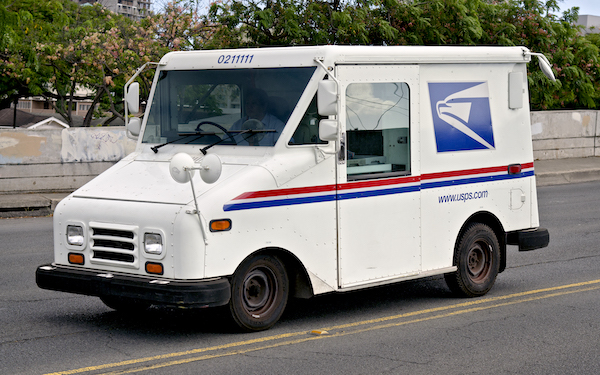The United States Postal Service (USPS) ships over 160 billion packages and letters every year. These whopping numbers reflect that a more significant percentage of the U.S. population is [surprisingly] still using postal services, indicating that manual labor is insufficient to handle the postal processes successfully.
That being the case, the postal services industry is tapping into the power of efficient automation systems to streamline the entire delivery process and deliver parcels to their correct destination. Machine vision systems, outfitted with top-notch lenses are the most common systems post offices utilize for various postal applications — USPS relies on these technologically advanced imaging systems to make deliveries.
These systems complete the postal tasks in half the time a human would be able to do so. On top of that, efficient imaging systems are less prone to committing errors in contrast to human workers. They can even help overcome a number of common challenges in the postal industry, such as sorting and deciphering illegible handwriting.
What are the most common uses of imaging systems in the postal industry?
Most postal processes have been automated, and as much as 98% of the mail is organized by automated sorting machines that are free of human intervention and employ advanced optical lenses. The standard postal processes that rely on machine vision include:
1. Deciphering of illegible addresses
The address is undoubtedly the most crucial element of every parcel; a correct address is conducive to the proper delivery. That being said, addresses have become a primary cause of concern for the postal industry. Many letters and parcels they have to deliver come with addresses that are hard to decode.
A variety of causes result in a hard-to-read address — it could be anything from bad or ornate handwriting to archaic fonts to water damage. These reasons make it hard for the workers to figure out where the mail is to be delivered.
Fortunately, the machine vision systems facilitate quicker delivery by identifying the addresses correctly. If the bad handwriting causes the problem, the imaging lens fitted in the vision system scans the writing and produces a digital image. This image is delivered to the experts at the post office, who examine the address and decode it.
More often than not, though, the process is completed without the help of experts — the vision systems do the job on their own. The latter matches the address to the ones installed on their database and prints a barcode on the piece of mail, which is then sent to the delivery address.
The use of these robust vision systems eliminates the painstaking process of going through each mail and examining the address, and this minimizes manual labor, boosting efficiency and productivity. In addition, it reduces the cost of operations. Statistics reveal that the vision-based mail sorting machines, multiline optical character readers (MLOCR), and remote barcoding systems (RBCS) helped USPS cut as much as $2 billion in operating deficits.
MLOCR and RBCs are used to read handwritten addresses and spray barcodes on letters. These vision systems streamline the process of letter delivery and enable faster delivery. Apart from USPS, other popular shipping and logistics companies like FedEx, UPS, and DHL have invested in vision systems to offer enhanced services.
Recently, there has been a shift from 1D, laser-based barcode readers to imaging systems, as they are capable of optical character recognition and 2D matrix reading. The vision systems are considered superior to laser scanners due to their improved read rate on damaged labels.
2. Sorting parcels and letters
The postal services industry is also leveraging premium imaging lenses to automate the process of sorting the mail. The vision systems primarily handle letters, parcels that measure up to 40 inches on a side, and cartons containing various products.
The imaging machine is used to sort the posts automatically as per their destination. To that end, the letters go through the conveyors and are measured to confirm the shipping rate. Subsequently, the address on each parcel is read with the help of Optical Character Recognition (OCR), and the mail is eventually sent to the delivery address.
Cartons and parcels are sorted with the help of OCR and barcode reading as well. The machine vision allows accurate and speedy measurement of the dimensions of each box, which helps determine the precise shipping rate. This function of the imaging systems boosts the efficiency of a wide range of organizations, including warehouse and distribution companies.
Previously, the process of postal sorting capitalized on CCD (charge-coupled device) sensors, as they allowed capturing high-quality images. However, these cameras experienced non-uniformity issues. Therefore, they were replaced by CMOS image sensors that helped overcome the concerned issue.
Today, nearly 95% of the letters and packages are sorted using the vision-based automation systems before being delivered to the expected location. These systems are powerful enough to separate letters from packages, barcoded letters from non-barcoded ones, and oversized letters from standard ones without any human intervention. This automation relieves the workers and allows them to engage in other postal processes to offer an effortless experience to the customers.
Let Universe Kogaku’s lens application engineers supply you with the best lens solution.
At Universe Optics, we manufacture high-quality lenses for imaging systems for a wide range of applications in the postal services industry. Our team of proficient engineers and manufacturers ensure the lenses meet all your needs and are customized to your applications.
